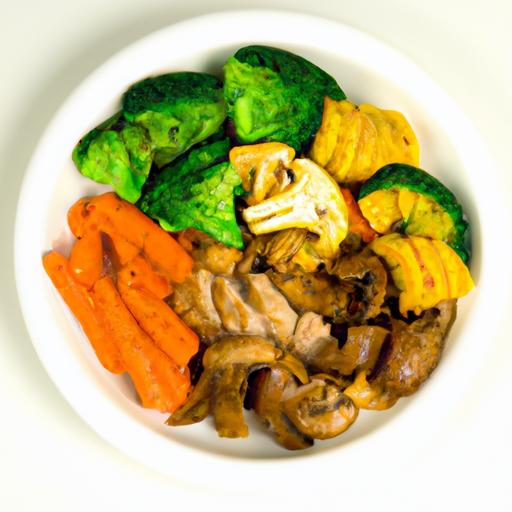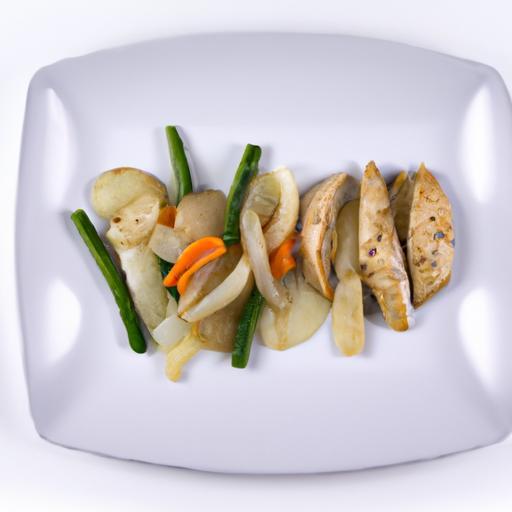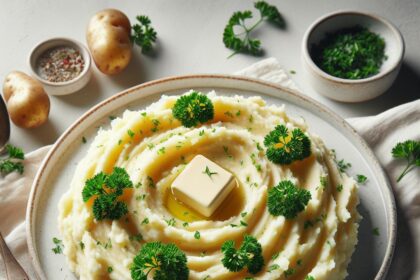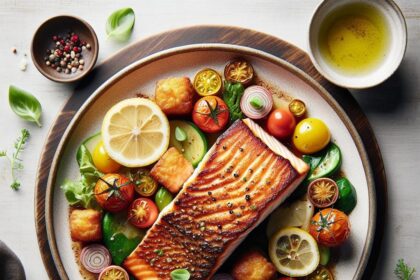In the world of meal prepping, the promise of a perfectly planned week’s worth of delicious, nutritious dishes can feel like the ultimate time-saver-a culinary safety net for busy days ahead. But what happens when that carefully crafted 7-day meal prep starts to spoil, both in taste and in freshness? Suddenly, your well-intended food plan turns into a fridge full of wilted greens, soggy leftovers, and lost motivation. Don’t surrender to the meal prep meltdown just yet. With a little know-how and some clever strategies, you can rescue your weekly menus, extend the life of your meals, and keep your healthy habits on track. Welcome to your survival guide for when 7-day meal prep spoils-because good food and good planning don’t have to go to waste.
Choosing the Right Ingredients to Extend Freshness and Flavor
When 7-day meal prep spoils, it’s often because the wrong ingredients were selected to endure a full week in the fridge or freezer. Freshness and flavor hinge on understanding the natural shelf life of produce, proteins, and grains. Opt for hardy vegetables like carrots, bell peppers, and cabbage, which retain crunch and nutrients longer than leafy greens. Meats such as chicken thighs, pork shoulder, or firm fish fillets hold up better than delicate cuts, especially when marinated or cooked before storage. Using whole grains like brown rice or farro also helps maintain texture and taste through the days.
Incorporate aromatics like garlic, fresh herbs (rosemary, thyme), and robust spices to preserve vibrancy and amplify flavor without relying on added salt or sauces that may become watery or soggy over time. Additionally, avoid pre-cutting vegetables too far in advance to minimize moisture loss and enzymatic browning; instead, prep them closer to serving.
Prep and Cook Time
- Prep Time: 30 minutes
- Cook Time: 45 minutes
- Total Time: 1 hour 15 minutes
Yield
5-6 servings, perfect for 7-day meal prep
Difficulty Level
Medium – requires some planning and proper storage technique
Ingredients
- 2 cups cooked brown rice, cooled
- 1 lb boneless, skinless chicken thighs
- 1 large carrot, sliced into sticks
- 1 cup red bell pepper, diced
- 1 cup shredded cabbage
- 3 cloves garlic, minced
- 1 tbsp fresh rosemary, chopped
- 1 tbsp olive oil
- 2 tsp smoked paprika
- 1 tbsp lemon juice
- Salt and pepper to taste
Instructions
- Marinate the chicken: Toss chicken thighs with olive oil, smoked paprika, garlic, rosemary, lemon juice, salt, and pepper. Let rest for 20 minutes to soak up flavor.
- Cook the chicken: Heat a skillet over medium-high heat. Sauté chicken thighs until golden brown and cooked through, about 6-7 minutes per side. Remove and set aside.
- Prepare the vegetables: In the same skillet, add carrots and bell peppers. Sauté until slightly softened but still crisp, 5 minutes. Stir in shredded cabbage last, cooking for an additional 2 minutes.
- Assemble meals: Divide cooked brown rice evenly into meal prep containers. Slice chicken thighs and layer on top. Distribute sautéed vegetables over the chicken and rice.
- Cool and store: Allow meals to cool to room temperature before sealing containers. Store meals in the refrigerator for up to 5 days or freeze for up to a week.
Smart Storage Solutions That Keep Your Meals Tasting Great
Use airtight containers with separate compartments or silicone dividers to prevent moisture migration between protein and veggies. Avoid stacking meals when still warm; elevated steam breeds sogginess and accelerates spoilage.
For herbs and fresh greens, store separately in a damp paper towel inside a zip-lock bag to maintain crispness. Consider vacuum sealing proteins or cooked grains to maximize freshness. Label containers with prep dates and rotate your meals weekly to ensure nothing lingers too long.
Reviving and Repurposing Spoiled Meals to Reduce Waste and Save Time
Even when 7-day meal prep spoils a bit, don’t toss ingredients prematurely. Slightly wilted vegetables can be revitalized by a quick sauté with garlic and olive oil, restoring both texture and fragrance. Dry chicken can become the star in a spicy curry or shredded for sandwiches with a smoky aioli.
Transform leftover grains into nourishing fried rice or hearty porridge by adding fresh aromatics and a splash of broth to rehydrate flavors. When in doubt, a homemade soup or stew is your best friend for rescued meal components, locking in warmth, moisture, and flavor.
Chef’s Notes
- Swap chicken thighs for firm tofu or chickpeas to make this plant-based while preserving shelf life.
- Use parchment paper between stacked meals when freezing to prevent sticking and ease defrosting.
- Adding a squeeze of fresh lemon or a sprinkle of finishing herbs just before eating brightens flavors sustainably.
- Batch-cooking grains separately and assembling meals daily can reduce spoilage while saving prep time.
Serving Suggestions
Garnish plated meals with toasted sesame seeds and thinly sliced scallions. A light drizzle of tahini sauce or yogurt-based dressing adds creaminess without weighing down the dish. Serve alongside a crisp cucumber salad to offer refreshing contrast and visual appeal.
| Nutrient | Per Serving |
|---|---|
| Calories | 410 |
| Protein | 35g |
| Carbohydrates | 40g |
| Fat | 12g |

For more tips on mastering meal prep longevity, visit our Meal Prep Storage Guide or explore food safety insights from USDA Food Safety and Inspection Service.
Q&A
Q&A: When 7-Day Meal Prep Spoils: Tips to Save Your Food Plan
Q1: Why does my 7-day meal prep sometimes spoil before the week is over?
A: Even with the best intentions, food can spoil due to a few sneaky culprits-temperature fluctuations in your fridge, moisture buildup, or prepping too far in advance. Some ingredients are more sensitive than others, turning from fresh to foul faster than you’d expect.
Q2: How can I tell if my meal prep is on the verge of going bad?
A: Trust your senses! Look for discoloration, off-smells, or slimy textures. If your food starts to smell sour or looks dull, it’s time to reconsider eating it. When in doubt, it’s safer to toss than to risk a tummy ache.
Q3: What are quick remedies if I notice my prepped meals spoiling early?
A: First, refrigerate immediately if you haven’t already. Reheat thoroughly before eating, as heat can kill some bacteria. You can also repurpose almost-spoiling veggies into soups or smoothies-cooking helps extend their lifespan. Alternatively, freeze portions you won’t use right away.
Q4: How can I prevent my 7-day meal prep from spoiling too soon?
A: Choose sturdy ingredients that last longer (think winter squash, carrots, and cabbage). Use airtight containers to reduce exposure to air and moisture. Dividing your meals into smaller portions helps-you only open what you need. Lastly, plan your prep closer to the day you intend to eat, or freeze meals midweek.
Q5: Is freezing meals a good option for extending freshness?
A: Absolutely! Freezing is your best friend when it comes to extending shelf life. Just be sure to use freezer-safe containers and label your meals with dates. When thawing, do it safely in the fridge overnight to preserve texture and flavor.
Q6: Are there any clever tricks to revive meals that are just starting to lose freshness?
A: Yes! A splash of fresh lemon juice or vinegar can brighten flavors and mask slight staleness. Adding fresh herbs or a crunchy topping can also breathe life back into a tired dish. Sometimes, transforming meals into salads, wraps, or stir-fries can help disguise the texture changes.
Q7: How should I adjust my meal prep strategy to suit my lifestyle better?
A: Reflect on your weekly schedule and hunger patterns. If 7 days feel too long, prep for 3-4 days and top up midweek. Mix fresh cooking with meal prep to keep variety and freshness alive. Also, build flexibility into your plan-have a few quick-cook staples on hand for unexpected cravings or spoiled meals.
Q8: What’s the golden rule to remember when meal prepping for a whole week?
A: Stay mindful that freshness beats rigid planning. It’s better to eat five days of stellar meals than seven days of sad, spoiled leftovers. Balance efficiency with food safety and savor the process-your body and taste buds will thank you!
Insights and Conclusions
In the world of meal prepping, even the most carefully planned 7-day menus can sometimes take a turn for the worse. But don’t let a spoiled batch of food derail your efforts or your appetite. With a little creativity, informed storage strategies, and a dash of flexibility, you can salvage your meals and keep your nutrition goals on track. Remember, meal prep isn’t about perfection-it’s about progress. So, the next time your week-long feast faces a hiccup, embrace these tips to save your plan and turn potential waste into a fresh opportunity for smart, flavorful eating.








